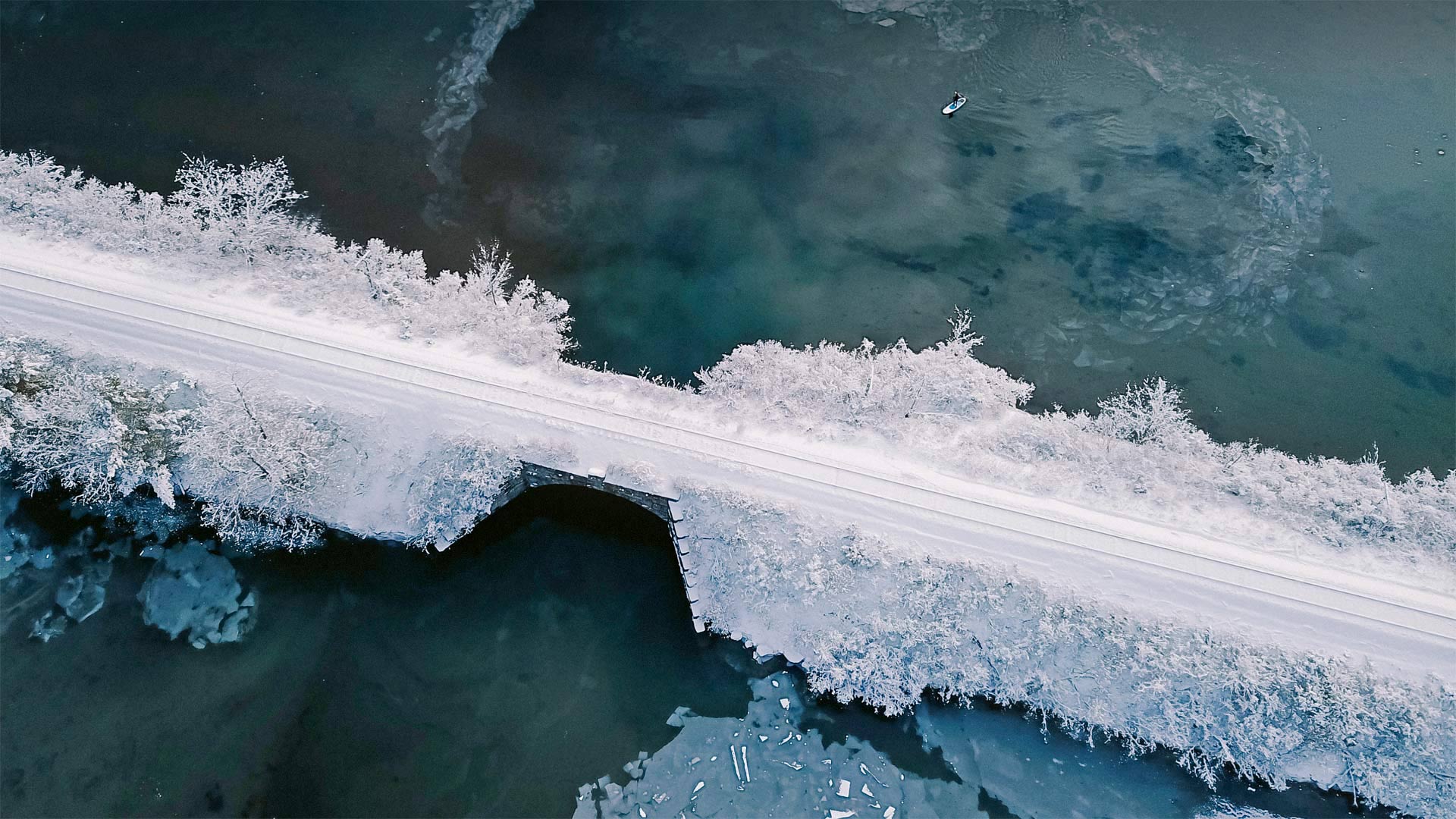横跨康涅狄格河畔血溪的铁路,新罕布什尔州汉诺威 Railroad crossing Bloody Brook alongside the Connecticut River in Hanover, New Hampshire (© DEEPOL by plainpicture)

横跨康涅狄格河畔血溪的铁路,新罕布什尔州汉诺威 Railroad crossing Bloody Brook alongside the Connecticut River in Hanover, New Hampshire (© DEEPOL by plainpicture)
Cold? What cold?
As the Scandinavian saying goes, 'There's no such thing as bad weather, just bad clothes.' The adventurer seen here, conquering the New England chill on a stand-up paddleboard, is a cold ocean removed from Nordic shores. But this watery winter excursion embodies the Scandie stamina distilled in the word 'friluftsliv,' literally translated 'free air life'—the notion that any time is a great time to be outdoors, weather be damned.
Friluftsliv has been part of Norse identity since Vikings and Goths eked out their existence in frozen fjords and forests. But it was Henrik Ibsen, the Norwegian master playwright, who brought the word into Nordic popular culture in the 1850s, imbuing it with national pride and folk spirituality. Now it's so woven in the fabric of Scandinavian life that some nonprofits are dedicated to friluftsliv, and many employers allot workers time to play outside—especially in winter, when daytime is brief and precious.
冷?什么冷?
正如斯堪的纳维亚谚语说的,'没有坏天气,只有坏衣服。在图片里看到的,在站立在冲浪板上的冒险家征服了新英格兰的寒意,是一个从北欧海岸退走的寒冷海洋。但是,这趟水上的冬季旅行体现了“friluftsliv”一词中提炼出的令人厌恶的耐力,字面意思是“自由空气生活”——即任何时候都是户外活动的好时机,天气真糟糕。
自从维京人和哥特人发现他们在冰冻的峡湾和森林中生存以来, 弗里卢夫特利夫一直是北欧身份的一部分。但正是挪威剧作家亨里克·伊布森(Henrik Ibsen)在19世纪50年代将这个词引入北欧流行文化,使之充满了民族自豪感和民间精神。现在,它已经融入了斯堪的纳维亚人的生活,以至于一些非营利组织都在致力于friluftsliv,许多雇主都会给工人分配时间在外面玩,尤其是在冬天,白天短暂而宝贵。
评论已关闭